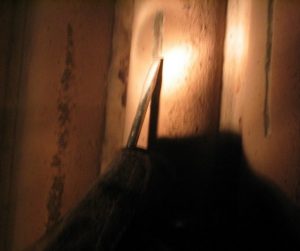CASE STUDY
Load Limitations Due to High Superheater Temperatures
| PLANT LOCATION | West Coast of Africa |
| FACILITY DESCRIPTION | VLCC Oil Tanker converted to FPSO |
| BOILER TYPE | Bi Drum |
| BOILER CAPACITY | 110 [Tonnes/hour] |
| STEAM CONDITIONS | HP: 65 [Bar] @ 520 [°C] |
Conditions:

The main boilers of a super tanker which were originally built to fire heavy fuel oil were later converted to fire crude oil as part of its conversion from a trading tanker to stationary use as a Floating Production Storage & Offloading [FPSO] facility. After its relocation from the shipyard to an off-shore location on the West Coast of Africa the boilers were brought into service and fired on crude oil for the first time. However, after several days of crude oil firing the boilers’ output gradually became severely limited due to high steam temperatures and the limited availability of steam began to impact on the overall production output of the FPSO facility. An urgent solution was necessary to prevent it from incurring a significant financial loss. A Design Boiler specialist was mobilized to the facility and the boiler was subjected to a series of boiler performance tests. Following these tests, a boiler inspection identified a distinct scale that had covered the furnace walls. Samples of the crude oil and the scale were collected from the furnace walls and sent to shore for laboratory analysis which identified this as a residue of the crude oil fuel used to fire the boiler. The laboratory analysis identified a highly reflective residue in the crude oil that was settling on the surfaces of the furnace walls. Design Boiler’s in-house computer models were able to establish that the high reflectivity of the fuel residue was restricting furnace heat absorption and exposing the superheater tubes to excessively high gas temperatures. This was not only limiting steam production but also generating high superheater metal temperatures which if not reduced, would significantly lessen the life of the superheaters. Superheater tube replacement on an off shore FPSO is a very expensive operation to undertake.
The long-term solution to the problem was to implement a device that could remove the furnace wall residue with the boiler remaining in service. This could only be achieved by installing sootblowers strategically along the furnace walls. However, sootblowers are purpose built and have a long lead time. A short term means of addressing the problem was needed until the sootblowers could be sourced and installed. A temporary operating strategy to control the problem was devised and verified using Design Boiler’s purpose developed boiler software. Even though the temporary strategy did not totally solve the problem, it was able to increase the boiler load capacity a little closer to the MCR rating of the boiler, minimizing financial losses until the sootblowers arrived. The problem was permanently addressed after the new wall sootblowers were installed and this has enabled the boilers to operate for many years without a recurrence of the problem.
Many problems encountered with boiler plant can be complex and difficult to resolve. A combination of boiler performance modelling with purpose developed boiler software in conjunction with site performance testing and evaluation can often provide a cost-effective method that not only solves difficult boiler problems but is able to evaluate the best fix options and produce an optimum solution.
